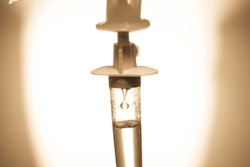
As a board member for a malpractice insurance company, I review claims submitted by oral and maxillofacial surgeons who use anesthesia in their private practices. In virtually every anesthesia-related claim, the following three issues repeatedly come up:
- Inappropriate patient selection
- Lack of emergency preparedness
- Complacency among the staff
Ultimately, the safest anesthesia administration is a team effort made by dedicated, highly trained professionals who have thoroughly vetted the patient ahead of time and regularly verify that all necessary equipment is in place and in good working order.
Practitioners often ask how they can deliver the anesthesia safely. Here are some simple guidelines.
Is the patient healthy enough?
 Colin Bell, DDS.
Colin Bell, DDS.Make sure the patient is healthy enough for the procedure. In addition to prescreening patients ahead of time, plan a face-to-face consultation before the scheduled procedure to review the patient's medical history. This meeting will give you a chance to answer their questions and to confirm that the patient is, in fact, healthy enough for the procedure.
This face-to-face consultation also enables you to have a second set of checks and balances. It creates an opportunity for you to assess potential problems firsthand and discuss them in detail with the patient before entering into the surgical setting.
Patient population
Always obtain patient-signed, informed consent documentation, which will ensure the patient acknowledges and understands the possible risks and also gives full consent to administer the anesthesia. The signed documents will be necessary if an adverse effect occurs during or after the procedure.
Two common examples of patients for whom it may not be safe to administer anesthesia in the office to are those who are extremely overweight and those with sleep apnea. Patients generally get sleepy when administered anesthesia, which may cause their tongues to drop back. This often results in a blocked airway for these sets of patients and could be a dangerous situation that may be handled best in a hospital setting.
These patients should be given a choice of anesthetic options based on in-office use or in a hospital setting. I've had several patients grumble about this. I explain to them that their safety is our top concern. If anesthesia cannot be safely performed in the office, then don't do it.
Communication
I recommend and practice communicating with patients thoroughly about what medical conditions create a higher risk, the possible results of that risk, and other options that should be considered to reduce the risk. Be transparent. Most patients will appreciate your honesty. Protect the ones that don't, and protect yourself by standing your ground. A grumbling patient may be a bit unpleasant, but it's a lot better than the disastrous alternatives that can result from ignoring the danger signs.
Anytime anesthesia is used, be sure there is an excellent reason to use it and document that reason in as much detail as possible. If there isn't a good reason, then don't use it. Instead, offer local anesthesia, nitrous oxide analgesia, or other options.
I also recommend making sure you and your staff are appropriately prepared for any possible outcome or emergency. All staff should be trained in cardiopulmonary resuscitation (CPR). Oral surgeons also should be trained and certified.
Daily, weekly, and monthly checklists should be created that you and your staff can use to ensure you always have the right, fully functional equipment in good working order and that everyone on the team knows how to use it. Make sure you know and adhere to regulations about equipment checks. Laws may vary from state to state.
If in doubt, or if you want to be extra careful, then check all equipment daily. For instance, are all your clocks set to the correct time? Is oxygen readily available? Are the emergency medicines onsite current?
Practicing what to do in an emergency is also crucial. Many organizations, such as the American Association of Oral and Maxillofacial Surgeons (AAOMS), American Society of Dentist Anesthesiologists, and the American Dental Association, have training courses on this topic. The AAOMS also has a comprehensive manual, Office Anesthesia Evaluation Manual, 9th Edition, available for purchase. In addition, AAOMS offers certification courses for dental assistants called the Dental Anesthesia Assistant National Certification Examination (DAANCE).
When administering anesthesia in your office, I recommend using the anesthesia team model, as outlined in DAANCE and advocated by the AAOMS. In this model, there are at least three people on the in-office anesthesia team: an oral surgeon, a surgical assistant, and a third person whose sole job is to monitor the patient and the anesthesia being administered. The monitor directs attention to anything that the surgeon and surgical assistant need to address.
Colin Bell, DDS, is a practicing oral surgeon at Oral Surgery Associates of North Texas in Dallas and the chief clinical officer of U.S. Oral Surgery Management.
The comments and observations expressed herein do not necessarily reflect the opinions of DrBicuspid.com, nor should they be construed as an endorsement or admonishment of any particular idea, vendor, or organization.


















